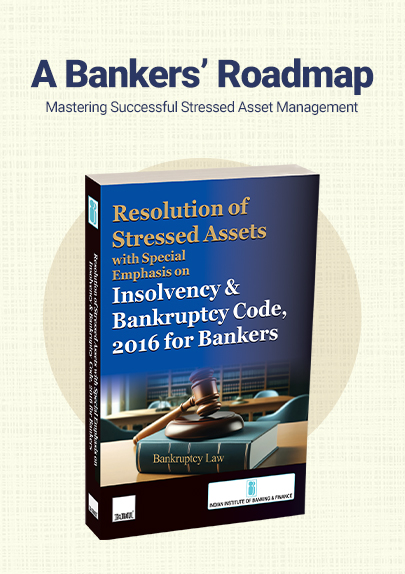Settlement Agreement: A Corporate Debtor’s RP & need for Conditional Withdrawal u/s 12A
- Blog|News|Insolvency and Bankruptcy Code|
- 3 Min Read
- By Taxmann
- |
- Last Updated on 27 February, 2023
[2023] 147 taxmann.com 528 (Article)
1. Introduction
Corporate Insolvency Resolution Process once initiated has the profound ability to take away the reins of the corporate entity from the promoters. In certain circumstances the promoters want to return to the driving seat after an amicable settlement. However such a settlement is beyond the scope of the legislative measures. Negotiated settlement is imperative for value maximisation which is the core objective of the Code and the only provision which deals with settlement between the creditors and debtors is section 12A of the Code.
“Once a bankruptcy petition is filed, it cannot be withdrawn without the leave of the Adjudicating Authority.”
However, in the initial text of the Insolvency and Bankruptcy Code Bill, 2016, the Bill was conspicuously silent regarding withdrawing of application filed by the Financial or Operational Creditors or Corporate Debtor. A reason for the non-inclusion of withdrawal process may be that once an application is admitted by Adjudicating Authority, the Corporate Insolvency Resolution Process is in rem rather than in personam between the applicant and the Corporate Debtor. Claims may arise from creditors dwarfing the initial default to the applicant.
2. Practical Difficulty
The rules prescribe that the Adjudicating Authority may permit withdrawal of applications before the admission. However, such withdrawal has to be applied by the applicant who has filed for initiation of corporate insolvency under section 7, 9 or 10. There existed lacunae as once an application is admitted by the Adjudicating Authority there was no legislation in place to withdraw the application in cases wherein the Corporate Debtor enters into settlement agreement with the creditors.
This situation arose in the case of Lokhandwala Kataria Construction Limited v Nisus Finance And Investment Managers, LLP, wherein the Financial Creditor filed a section 7 Application for initiation of insolvency before the Adjudicating Authority which was subsequently admitted by the Adjudicating Authority. However, the Corporate Debtor and Financial Creditor entered into a settlement agreement, on the basis of which the Financial Creditor sought to withdraw the application. The Appellate Authority while deciding on the appeal against the admission held that even though there exists a settlement between both the Corporate Debtor and Financial Creditor, NCLAT cannot utilize the inherent power provided in NCLT Rules, 2016 to allow for the compromise subsequent to the admission of the matter. The Appellate Authority further prescribed that rule 11 has not been adopted for the Code and National Company Law Tribunal while acting as Adjudicating Authority under the Code cannot use rule 11 to withdraw the application. On appeal before Supreme Court, the Court acceded to view of NCLAT and held that rule 11 of NCLT Rules, 2016 cannot be utilized to allow compromise. Supreme Court invoking Article 142 of the Constitution, to pass such orders for doing complete justice, allowed for the settlement and subsequent withdrawal of application post admission.
In November 2017, when a similar situation arose again before the Supreme Court in Uttara Foods And Feeds (P.) Ltd. v. Mona Pharmachem [2018] 92 taxmann.com 185 (SC), the Court observed its earlier decision in Lokhandwala Kataria Construction Ltd.6 and invoked Article 142 of the Constitution to set aside the appeal of NCLAT order. However, Supreme Court remarked that the absence of such a law will necessitate redressal, in all future instances, before Supreme Court and suggested that “the relevant Rules be amended by the competent authority so as to include such inherent powers”. Supreme Court also ordered that a copy of the order to be forwarded to Ministry of Law and Justice.
Click Here To Read The Full Article
Disclaimer: The content/information published on the website is only for general information of the user and shall not be construed as legal advice. While the Taxmann has exercised reasonable efforts to ensure the veracity of information/content published, Taxmann shall be under no liability in any manner whatsoever for incorrect information, if any.

Taxmann Publications has a dedicated in-house Research & Editorial Team. This team consists of a team of Chartered Accountants, Company Secretaries, and Lawyers. This team works under the guidance and supervision of editor-in-chief Mr Rakesh Bhargava.
The Research and Editorial Team is responsible for developing reliable and accurate content for the readers. The team follows the six-sigma approach to achieve the benchmark of zero error in its publications and research platforms. The team ensures that the following publication guidelines are thoroughly followed while developing the content:
- The statutory material is obtained only from the authorized and reliable sources
- All the latest developments in the judicial and legislative fields are covered
- Prepare the analytical write-ups on current, controversial, and important issues to help the readers to understand the concept and its implications
- Every content published by Taxmann is complete, accurate and lucid
- All evidence-based statements are supported with proper reference to Section, Circular No., Notification No. or citations
- The golden rules of grammar, style and consistency are thoroughly followed
- Font and size that’s easy to read and remain consistent across all imprint and digital publications are applied






 CA | CS | CMA
CA | CS | CMA


